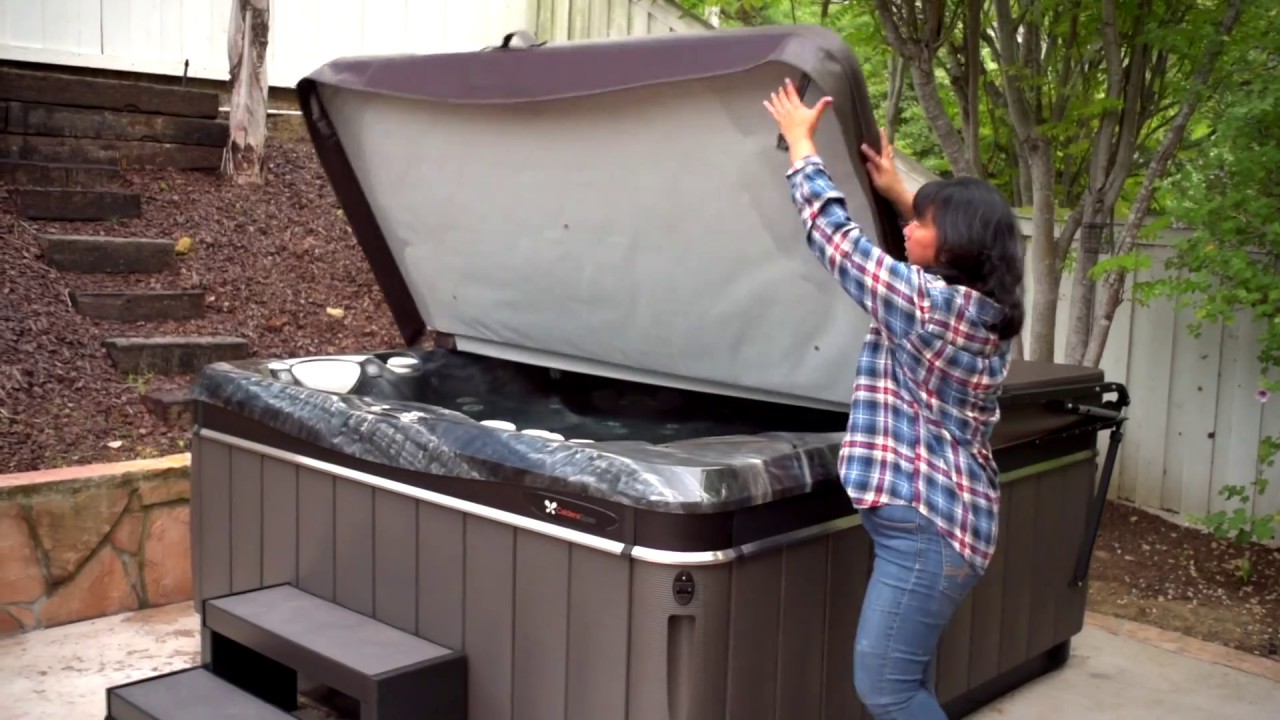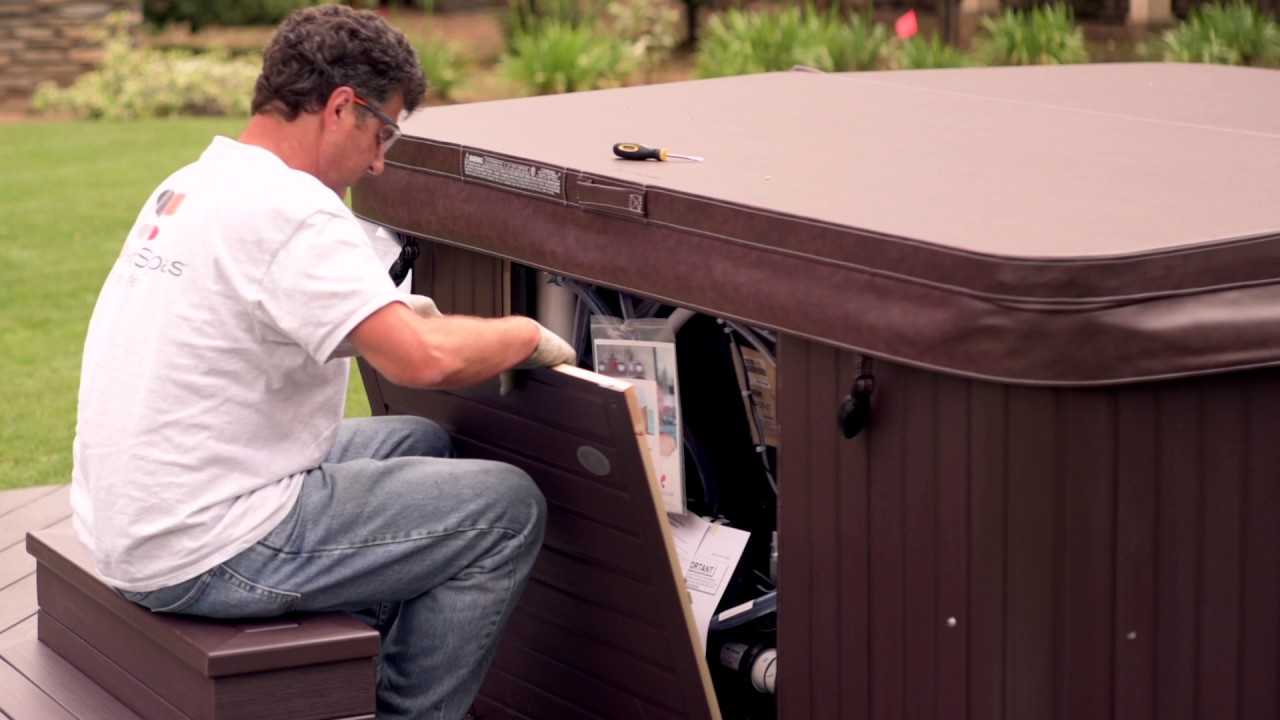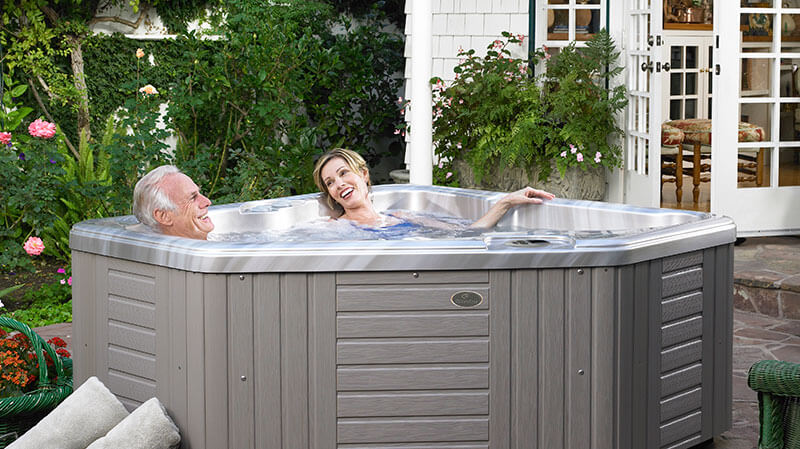
Are you looking to get the most out of your hot tub investment? With regular hot tub maintenance and proper care, you can significantly extend the life of your spa well beyond the typical 7-10 year average. In fact, with diligent hot tub maintenance, many owners enjoy their spas for 15-20+ years, effectively doubling the expected lifespan while saving thousands in potential repair or replacement costs.
At Delaware Hot Tub Company, we’ve helped countless customers maximize their spas’ longevity through proper maintenance practices. This comprehensive guide shares our expert hot tub maintenance tips to keep your spa running efficiently for years to come.
Understanding Your Hot Tub System
Before diving into specific hot tub maintenance tips, it’s important to understand the basic components of your spa system. Your hot tub consists of several integrated systems working together: the circulation system with pumps and jets that move water throughout the tub; the filtration system that removes debris and contaminants; the heating system maintaining your desired water temperature; the electrical control system powering all functions; and the shell and cabinet forming the physical structure.
Each component requires specific maintenance attention. We recommend creating a maintenance logbook to track cleaning schedules, water chemistry readings, and part replacements. This documentation helps establish patterns and anticipate needs before problems arise.
Water Chemistry Management
Proper water chemistry is arguably the most critical aspect of hot tub maintenance. Proper sanitizer levels can eliminate up to 99.9% of harmful bacteria in recreational water settings.
Essential Water Testing Parameters
For effective hot tub maintenance, test your water 2-3 times weekly, maintaining pH levels between 7.2 and 7.8, total alkalinity between 80 and 120 ppm, and appropriate sanitizer levels (chlorine at 1-3 ppm or bromine at 3-5 ppm). Calcium hardness should remain between 175 and 250 ppm for optimal equipment protection.
Step-by-Step Water Balancing
The sequence of balancing your water chemistry matters significantly. Start by testing the water using reliable test strips or a digital tester. Always adjust alkalinity first since it affects pH stability, then balance the pH second. Add your chosen sanitizer last, and allow the circulation system to run for at least 30 minutes after adding any chemicals to ensure proper distribution.
Seasonal Adjustments
Hot tub maintenance requires seasonal adjustments to your water care routine. Due to higher ambient temperatures and frequent use during summer months, increased sanitizers may be needed. Winter maintenance might require lower sanitizer levels, but proper circulation must be maintained to prevent freezing in colder climates.
Water Replacement Schedule
Even with perfect hot tub maintenance, water eventually needs replacement. Water in small heated recreational water venues should be replaced periodically based on usage patterns and water quality indicators.
For most residential hot tubs, plan to drain and refill every 3-4 months. The process involves turning off power at the breaker, draining using the spa’s drain valve or submersible pump, cleaning the empty shell with non-abrasive cleaners, refilling with fresh water, and balancing chemistry before heating.
Filtration System Care
Your hot tub’s filtration system constantly removes contaminants. Research indicates that proper filtration can remove particles as small as 10-20 microns, significantly improving water quality and reducing chemical demand.
Filter Cleaning Schedule
Establish a regular filter cleaning routine for optimal hot tub maintenance. Rinse your filters weekly with a garden hose to remove larger debris. Perform a deeper clean monthly with a filter-specific cleaner. Quarterly, soak filters overnight in a chemical cleaner solution to remove oils and embedded contaminants.
Signs It’s Time to Replace Filters
Even with perfect hot tub maintenance, filters eventually wear out. Watch for discoloration that doesn’t improve with cleaning, torn or damaged pleats, clogging that returns immediately after cleaning, or filters older than 12-18 months, regardless of appearance. These are all indicators that replacement is necessary.
Maximizing Filter Efficiency
To extend filter life and improve efficiency, install a pre-filter on your garden hose when filling the tub to reduce contaminants from your water source. Asking users to shower before entering the hot tub can dramatically reduce body oils and products entering the water. Many serious hot tub owners keep multiple filters in rotation to extend their collective lifespan and ensure one is always clean and ready for use.
Cover Maintenance and Protection
Your hot tub cover is crucial to effective hot tub maintenance. It protects water quality and energy efficiency. A well-maintained spa cover can reduce energy consumption by up to 50% compared to an uncovered spa.
Proper Cover Cleaning
Effective hot tub maintenance includes regular cover care. Remove debris whenever you notice it accumulating rather than allowing it to decompose on the cover. Clean monthly with mild soap and water, avoiding harsh chemicals that can degrade the vinyl. Apply a UV protectant quarterly to prevent sun damage, and in winter climates, remove snow promptly using a soft broom to prevent weight damage.
Signs of Cover Deterioration
A quality cover typically lasts 5-7 years with proper hot tub maintenance. Watch for waterlogging (when the cover becomes extremely heavy), visible cracks or tears in the vinyl, strong odors that persist after cleaning, or sagging in the center. Replacing your cover promptly when needed protects your entire system and improves energy efficiency.
Component-Specific Maintenance
Pump and Motor Care
The circulation system is the heart of your hot tub. Research shows that properly maintained pumps operate up to 30% more efficiently than neglected ones.
For pump and motor care, listen regularly for unusual sounds during operation that might indicate bearing wear or impeller problems. Ensure adequate water flow through jets and check for leaks around the pump housing quarterly. Always maintain proper water levels to prevent airlocks that can damage the pump.
Heater Maintenance
Heater maintenance involves verifying consistent temperature maintenance and checking for error codes on the control panel that might indicate problems. Inspect for calcium buildup annually, particularly if you live in a hard water area. Most importantly, ensure water chemistry stays balanced to prevent scale formation that can significantly reduce heater efficiency and lifespan.
Jets and Plumbing System
Comprehensive hot tub maintenance includes flushing the plumbing system quarterly with a line flush product to remove biofilm buildup. If your jets are adjustable, rotate their positions monthly to prevent seizing. Remove and clean jet faces in a vinegar solution twice yearly to dissolve mineral deposits that can restrict water flow.
Shell and Cabinet Preservation
Clean the waterline weekly with a non-abrasive cleaner to prevent scum buildup that can become increasingly difficult to remove. Wipe down the cabinet with an appropriate cleaner quarterly to prevent deterioration from environmental exposure. During each water change, inspect the shell for cracks or damage, applying appropriate treatments based on your specific shell material, whether acrylic, rotomolded plastic, or another composition.
Maintenance Calendar
Consistent hot tub maintenance according to a regular schedule is key to longevity. Weekly maintenance should include testing and adjusting water chemistry, cleaning the waterline, rinsing filters, and wiping the cover. Monthly, filters are cleaned deeper, the cover is cleaned and conditioned, all components are checked for proper operation, and the cover is inspected for any damage.
Quarterly intensive care involves draining and refilling the water, deep cleaning the empty shell, flushing the plumbing system, cleaning jet faces, and inspecting electrical connections with the power off. Annually, consider having a certified technician check electrical systems, inspect the heating element, evaluate pump performance, and check for leaks in the closed plumbing system.
Find Your Perfect Hot Tub at Delaware Hot Tub Company
Implementing these hot tub maintenance tips can truly double your spa’s lifespan, saving you thousands while ensuring years of trouble-free enjoyment. At Delaware Hot Tub Company, we’ve been helping customers maximize their hot tub investments for over two decades, and we’ve seen firsthand how proper maintenance transforms a typical 7-10 year lifespan into 15-20+ years of reliable operation.
To learn more, browse our selection of hot tubs online or visit our Millsboro or Lewes showroom today!




